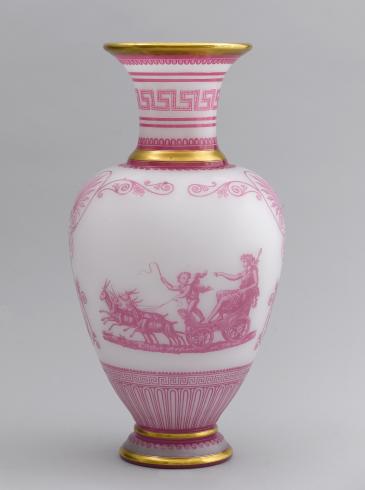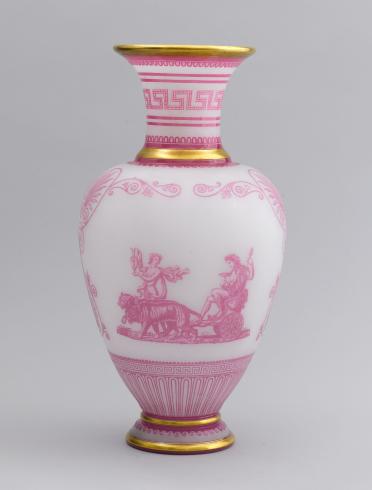This amphora-shaped vase without handles clearly illustrates the virtuosity of Baccarat thanks to the new acid engraving procedure recently developed by the chemist Kessler.
The bacchanalia patterns (Bacchus in a chariot pulled by two tigers on one side, Ariadne (?) in a carriage drawn by two horses on the other) stand out in pink on a white background in the style of an antique cameo. Between the main subjects is a frieze of palmettes and scrolls providing a beautiful decorative effect.
In the 19th century, Baccarat Crystal was the leading glass producer in France. Despite competition from foreign firms, it won the grand medal of honour at the Universal Expositions in 1855 and 1867. Commentators at the Exposition in 1867 even considered French crystal to be superior to English crystal “in terms of the diversity of products, variety and good taste of the shapes”.
The acquisition of this vase, other copies of which exist at the Chrysler Museum in Norfolk and the Musée d’Orsay in Paris, in blue crystal on a white background, completes the Petit Palais’ collection of glass works, which includes many items from the Art Nouveau period but few from the previous period, with the exception of a pitcher of Bracquemond’s “Water Glass”.
D. M.

City of Paris municipal collection's website
The collections portal can be used to search the collections of Paris’s 14 municipal museums (approximately 336,000 works, including 43,000 belonging to the Petit Palais).
It is also possible to download around 12,000 images of the museum’s works free of charge.
Access the Museums of the City of Paris collections portal
Extern databases
Discover a selection of databases online presenting works from the Petit Palais or documents concerning the history of the museum.


